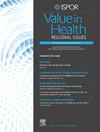公共卫生领域法律途径的高昂成本:坎皮纳斯市统一卫生系统药品司法化的影响》。
IF 1.4
Q3 HEALTH CARE SCIENCES & SERVICES
引用次数: 0
摘要
研究目的本研究旨在评估2017年至2021年巴西圣保罗州坎皮纳斯市统一卫生系统药品司法化的相关成本和因素:这项横断面研究使用了坎皮纳斯市卫生局和圣保罗州法院提供的数据:样本包括 506 种药品(322 种活性物质)和 493 个法律案件。在支付的 927 万美元中,67.3% 用于购买药品。平均而言,28.8%的药品被列入《国家基本药物目录》(Rename),其中 52.3%被列入专门部分。用于非注册药品和肿瘤药品的支出占总支出的 76%。购买特定品牌的药品占主导地位(53.7%),其中 75.5%有治疗等效物。ABC 曲线显示,在为 573 名原告提供服务的费用中,仅 28 种活性物质就占了 79.8%。在法律诉讼中,有四个因素阻碍了公共资源的合理使用:承担其他联邦实体的责任、购买未纳入 Rename 的药品和肿瘤药品、商标确定以及无限期供应药品的要求。与这些因素相关的费用导致支出增加,即使对市政府提出的法律要求有所减少:从 2017 年到 2021 年,坎皮纳斯的药品司法化需要 620 万美元的拨款,但仅用于治疗 0.068% 的人口。相关因素包括法律要求和内部管理挑战导致成本增加。本文章由计算机程序翻译,如有差异,请以英文原文为准。
The High Cost of the Legal Route in Public Health: The Impact of the Judicialization of Medicines in the Municipal Unified Health System in Campinas
Objective
This study aimed to assess the costs and factors associated with the judicialization of medicines for the municipal Unified Health System in Campinas, São Paulo, Brazil, from 2017 to 2021.
Methods
This cross-sectional study used data provided by the Municipal Health Department of Campinas and the Court of Justice of the State of São Paulo.
Results
The sample comprised 506 medicines (322 active substances) and 493 legal cases. Of the US$9.270 million disbursed, 67.3% were allocated to purchase medicines. On average, 28.8% of the pharmaceuticals were listed on the National List of Essential Medicines (Rename), of which 52.3% were listed in the specialized component. Expenditures on nonincorporated and oncological medicines accounted for 76% of the total value. Acquisition of brand-specific medicines was predominant (53.7%), of which 75.5% had therapeutic equivalents. ABC curve shows that only 28 active substances corresponded to 79.8% of the expenses incurred to serve 573 plaintiffs. Four factors, when present in legal actions, prevented the rational use of public resources: assumption of responsibilities of other federative entities, acquisition of medicines not incorporated in Rename and oncological drugs, trademark determination, and the requirement to supply the medicine for an indefinite period. Costs associated with these factors caused an increase in expenditure, even with a decrease in legal demands filed against the municipality.
Conclusions
Judicialization of medicines in Campinas from 2017 to 2021 required an allocation of US$6.2 million, aimed at treating only 0.068% of the population. Associated factors include legal requirements and internal management challenges that have increased costs.
求助全文
通过发布文献求助,成功后即可免费获取论文全文。
去求助
来源期刊

Value in health regional issues
Pharmacology, Toxicology and Pharmaceutics-Pharmacology, Toxicology and Pharmaceutics (miscellaneous)
CiteScore
2.60
自引率
5.00%
发文量
127
 求助内容:
求助内容: 应助结果提醒方式:
应助结果提醒方式:


